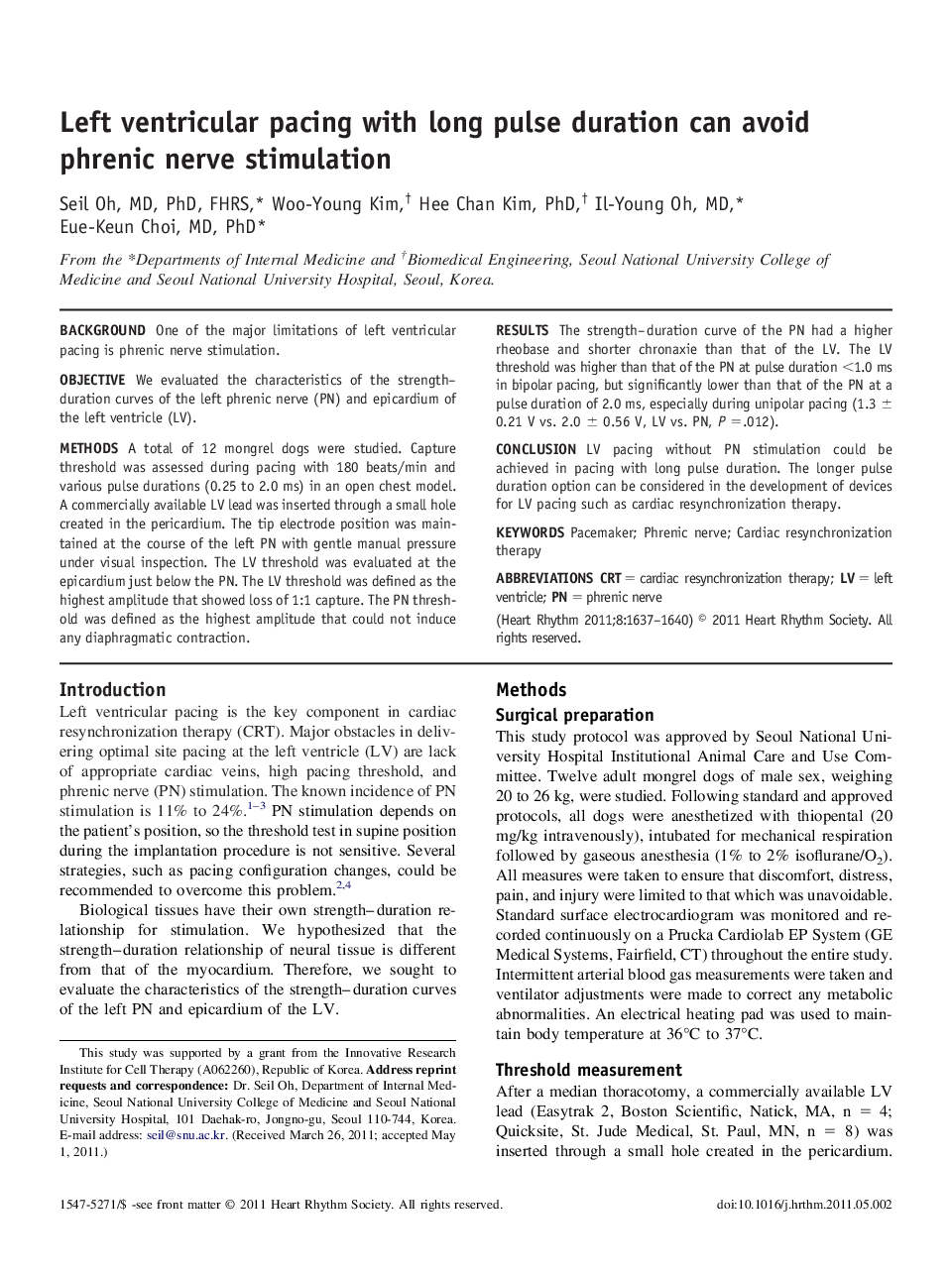| کد مقاله | کد نشریه | سال انتشار | مقاله انگلیسی | نسخه تمام متن |
|---|---|---|---|---|
| 2923696 | 1175883 | 2011 | 4 صفحه PDF | دانلود رایگان |

BackgroundOne of the major limitations of left ventricular pacing is phrenic nerve stimulation.ObjectiveWe evaluated the characteristics of the strength–duration curves of the left phrenic nerve (PN) and epicardium of the left ventricle (LV).MethodsA total of 12 mongrel dogs were studied. Capture threshold was assessed during pacing with 180 beats/min and various pulse durations (0.25 to 2.0 ms) in an open chest model. A commercially available LV lead was inserted through a small hole created in the pericardium. The tip electrode position was maintained at the course of the left PN with gentle manual pressure under visual inspection. The LV threshold was evaluated at the epicardium just below the PN. The LV threshold was defined as the highest amplitude that showed loss of 1:1 capture. The PN threshold was defined as the highest amplitude that could not induce any diaphragmatic contraction.ResultsThe strength–duration curve of the PN had a higher rheobase and shorter chronaxie than that of the LV. The LV threshold was higher than that of the PN at pulse duration <1.0 ms in bipolar pacing, but significantly lower than that of the PN at a pulse duration of 2.0 ms, especially during unipolar pacing (1.3 ± 0.21 V vs. 2.0 ± 0.56 V, LV vs. PN, P =.012).ConclusionLV pacing without PN stimulation could be achieved in pacing with long pulse duration. The longer pulse duration option can be considered in the development of devices for LV pacing such as cardiac resynchronization therapy.
Journal: Heart Rhythm - Volume 8, Issue 10, October 2011, Pages 1637–1640